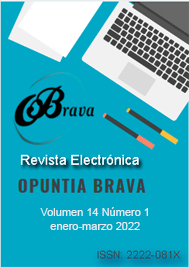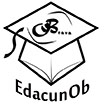Hamming's method, an approach from educational software
Keywords:
Educational software, Hamming method, error detection, error correction.Abstract
The research presents a proposal for educational software to favor the teaching-learning process of the Hamming method in the Computer Networks subject. The fundamental characteristics of educational software are discussed as well as the main elements to take into account for its development. The work has its origin in the need to develop educational software as a didactic material that facilitates the understanding of the Hamming method for students of the Informatics Engineering career. The priority was directed to a proposal for a visual application developed in Java that demonstrates the procedure to follow for the detection and rectification of errors by means of this method. The main result is a new educational software proposal for the subject to support the teaching-learning process.
Downloads
References
Grande-de-Prado, M., García-Peñalvo, F. J., Corell, A. y Abella-García, V. (2020). La virtualización causada por el Covid-19: recomendaciones para la evaluación. En M. Cid, N. Rajadell-Puiggròs yG. Santos Costa (Eds.), Ensinar, avaliar e aprender no ensino superior: Perspetivas internacionais (pp. 231-250). Évora, Portugal: Centro de Investigação em Educação e Psicologia da Universidade de Évora.
Gutierrez, E. (2020). Los recursos informáticos en la formación inicial maestro primario (tesis doctoral inédita). Universidad de Las Tunas. Cuba.
Hurtado, F. J., Coloma, O., Peña, Y., Rodríguez, L. A., Nieto, L. E. y Labañino, C. (2009). Uso del software educativo en la escuela cubana y su impacto en el aprendizaje de los estudiantes. La Habana: Educación Cubana. Recuperado de https://docplayer.es/11330483-Uso-del-software-educativo-en-la-escuela-cubana-y-su-impacto-en-el-aprendizaje-de-los-estudiantes.html
Maldonado, K., Vera, R., Ponce, L. M. y Tóala, F. J. (2020). Software educativo y su importancia en el proceso de enseñanza-aprendizaje: software educativo y su importancia. UNESUM-Ciencias. Revista Científica Multidisciplinaria, 4(1), 123-30. Recuperado de http://revistas.unesum.edu.ec/index.php/unesumciencias/article/view/211
Martínez, L. (2019). Los entornos virtuales de enseñanza aprendizaje para la gestión del conocimiento en el estudiante de licenciatura en educación informática (tesis doctoral inédita). Universidad de Las Tunas. Cuba.
Márquez, J. S., Márquez, G. y Márquez, J. S. (2018). Software educativo o recurso educativo. Varona. Revista Científico Metodológica (67).
Rivero, D. C. (2011). Software educativo para el proceso de enseñanza aprendizaje del método de Huffman (tesis de maestría inédita). Universidad de Oriente. Santiago de Cuba. Cuba.
Sacristán, J. G. (2015). Diversos y también desiguales. ¿Qué hacer en educación? Recuperado de http://www.quadernsdigitals.net/datos_web/hemeroteca/r_7/nr_97/a_1126/1126.htm
Vialart, M. N. (2020). Estrategias didácticas para la virtualización del proceso enseñanza aprendizaje en tiempos de COVID-19. Educación Médica Superior, 34(3).








.png)



.png)





















